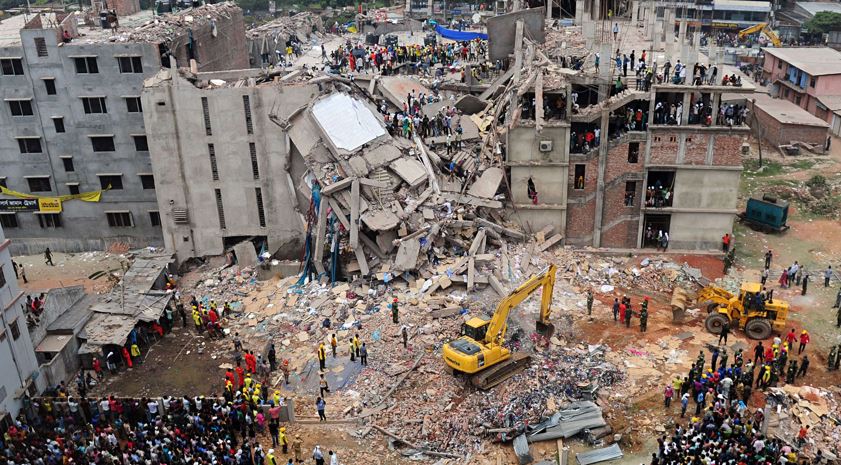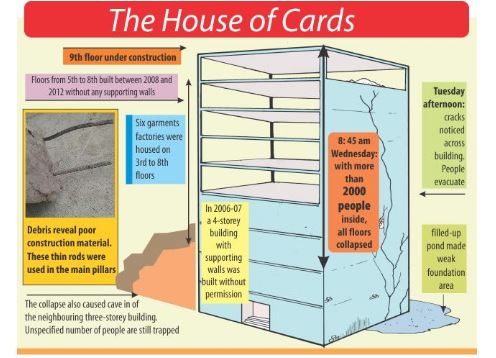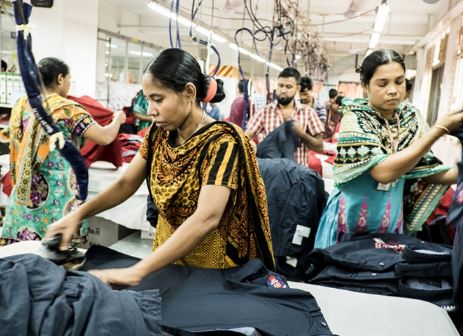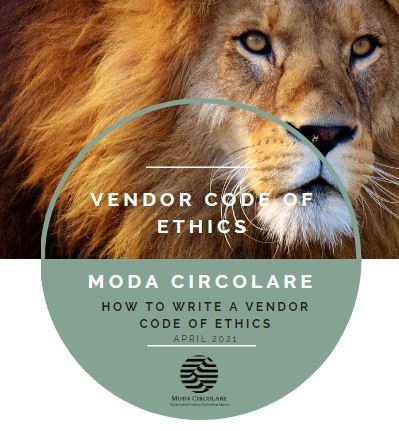VENDOR CODE OF ETHICS = CRITICAL AND ESSENTIAL
SO WHY IS HAVING A VENDOR CODE OF ETHICS A CRITICAL AND ESSENTIAL DOCUMENT TO HAVE?
If you do not have a Vendor Code of Ethics for your apparel brand, you could be putting your brand at risk. A Vendor Code of Ethics outlines what you expect from your suppliers in terms of Health and Safety, Employment and Environmental Requirements. Basically it protects the brand from any shortcomings the suppliers may have. For example, if you don’t outline and clearly state – No Child Labour allowed – well, you cannot get upset if your factory is found out to be using child labour. Yes of course you can assume the factory does not use child labour, however, if you do not have a signed agreement that states that it is not allowed, then who is to stop them? I know this example is a little harsh, however it is reality. A Vendor Code of Ethics is critical for an apparel brand.

RANA PLAZA COLLAPSE
Now let us touch upon the Rana Plaza Collapse (you can read all the details here). This terrible accident happened in 2013 in Bangladesh. There were many brands that had no idea their clothing was even made at this factory. This shows lack of transparency in both the case of the vendors and the brands. In the case of Rana Plaza collapse, there were minimal health and safety measures in place for the workers. According to the Conversation.com, after this accident the industry vowed to do better. Within a month of this terrible accident, 222 companies signed the Accord on Fire and Building Safety in Bangladesh, a legally binding agreement meant to ensure garment workers had safe workplaces. So, now that you understand there were health and safety issues in the factory just before it collapsed, as a brand what can you do to make sure your factories and suppliers are compliant? The basic step – is create a VENDOR CODE OF ETHICS and get them to sign it. A Vendor Code of Ethics is critical for an apparel brand.
According to the 2019 report: Exploring the system capacity to meet occupational health and safety needs: the case of the ready-made garment industry in Bangladesh, by BCM Heath Services Research:
There is also a shortage of suitably qualified engineers. Following the Rana Plaza incident more emphasis was given to building safety. However, the Dhaka district office does not have an appropriately qualified number of engineering staff to assess structural safety of buildings.
One informant said: “Most of the engineers who are working with the safety section have an educational background of electrical or chemical engineering. The building structure issues will be better understood by a civil engineer. But we do not have any engineer with civil engineering background, which is a big challenge. We need ten engineers but we have five engineers.”
As indicated by one factory inspector: “I visited a garment factory many times. I had difficulty in breathing due to inhaling fabric dust. We need reliable data but we do not have data on the health problems of the workers in our hand now.”
Further to the absence of individual factory level information for local hazard and health risk management, informants also identified the absence of a national system for reporting, assessing and sharing the data in order to make policy, design strategy and interventions to address the health problems of the workers.

WHAT IS A VENDOR CODE OF ETHICS?
A Vendor Code of Ethics (VCoE) outlines a brands commitment to respecting human and
labour rights. It also includes promoting safe and fair working conditions for workers in their supply
chain. It outlines a brands responsibility principles to ensure that, despite cultural and legal
differences among countries where goods are produced or sourced, all of the suppliers uphold
a consistent set of policies. Where the VCoE conflicts with local laws, suppliers are required
to follow the stricter regulations.
INTERNATIONAL REFERENCES TO CONSIDER
The following is a list of suggested international references that may want to be considered
for the organizations Vendor Code of Ethics. This is by no means an exhaustive list. Please
look for others that your company can stand behind.
- Various International Labour Organization’s (ILO) conventions, in particular conventions
29, 105, 138, 182 (child labor and forced labor), 155 (occupational health and safety), 111
(discrimination), 100 (equal remuneration), 87 and 98 (freedom of association, protection
of the right to organize and collective bargaining) - The OECD Guidelines for Multinational Enterprises
- The United Nations Convention on the Rights of the Child
- The 10 Principles of the United Nations Global Compact and associated Sustainable
- Development Goals (SDGs)
- The UNGP (United Nations Guiding Principles on Business and Human Rights)
- The United Nations Woman’s Empowerment Principles
- The United Nations Universal Declaration of Human Rights and the European Convention
on Human Rights - Fair Labor Association’s Labor Standards
- California Transparency In Supply Chains Act
- OECD Due Diligence Guidance for Responsible Supply Chains in the Garment and Footwear
Sector - ETI Base Code
- Modern Slavery Act

The Vendor Code of Ethics outlines to all your suppliers, what exactly it is that you require and includes such details as:
Health and Safety of Workers
- The Vendor shall provide safe and healthy workplace and residential settings to prevent accidents and injury to health arising out of, linked with, or occurring in, the course of work or as a result of the operation of Vendors’ facilities. Workers must have sufficient health and safety training, access to clean washroom facilities and potable water, and clean and safe residential facilities that meet their basic needs. Working conditions are decent. A safe and hygienic working environment shall be provided, and best occupational health and safety practice shall be promoted, bearing in mind the prevailing knowledge of the industry and of any specific hazards.
Employment
- transparency and open communication
- grievance mechanisms
- corruption and abuse
- child labour
- harassment
- wage compensation and benefits
- freedom of association and collective bargaining
- slavery and forced labour
Environment
- Vendors are encouraged to track, manage, and mitigate the environmental impact of their operations and strategies, including those of their suppliers. This includes integrating principles of sustainability into business decisions such as responsible use of natural resources, adoption of cleaner production and implementing pollution prevention measures.

RELATIONSHIPS WITH YOUR FACTORIES AND SUPPLIERS ARE KEY
It is imperative that transparent and open communication flows both directions, between a brand and their factories and suppliers. Once you prepare a Vendor Code of Ethics, ensure that your factories and suppliers sign it and understand what is required. If you are looking for an example of Vendor Code of Ethics, start with this.
So hopefully this article gives you an appreciation of why a Vendor Code of Ethics is so critical for an apparel brand. Even if you are a small to mid-sized brand, this can be completed in a short time period. Having a Vendor Code of Ethics will give your factories and suppliers an idea of your expectations moving forward.
CONTACT MODA CIRCOLARE

About the author:

Lizzy Cross is an expert in sustainable and circular fashion and is the founder of Moda Circolare, a sustainable fashion consulting agency. Moda Circolare helps fashion and apparel brands embed sustainability into their current business strategies. Moda Circolare’s mandate is to help the fashion industry live in harmony with nature and they do this by working with brands to create robust Sustainable and Circular Business Strategies and Roadmaps for Success.

Get a little guidance on creating your Vendor Code of Ethics or Vendor Code of Conduct and contact us today!
Error: Contact form not found.
References:
https://theconversation.com/years-after-the-rana-plaza-tragedy-bangladeshs-garment-workers-are-still-bottom-of-the-pile-159224
https://bmchealthservres.biomedcentral.com/articles/10.1186/s12913-019-4291-y
https://modacircolare.com/how-to-write-a-vendor-code-of-ethics/
